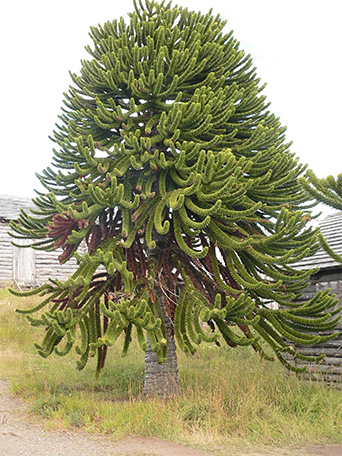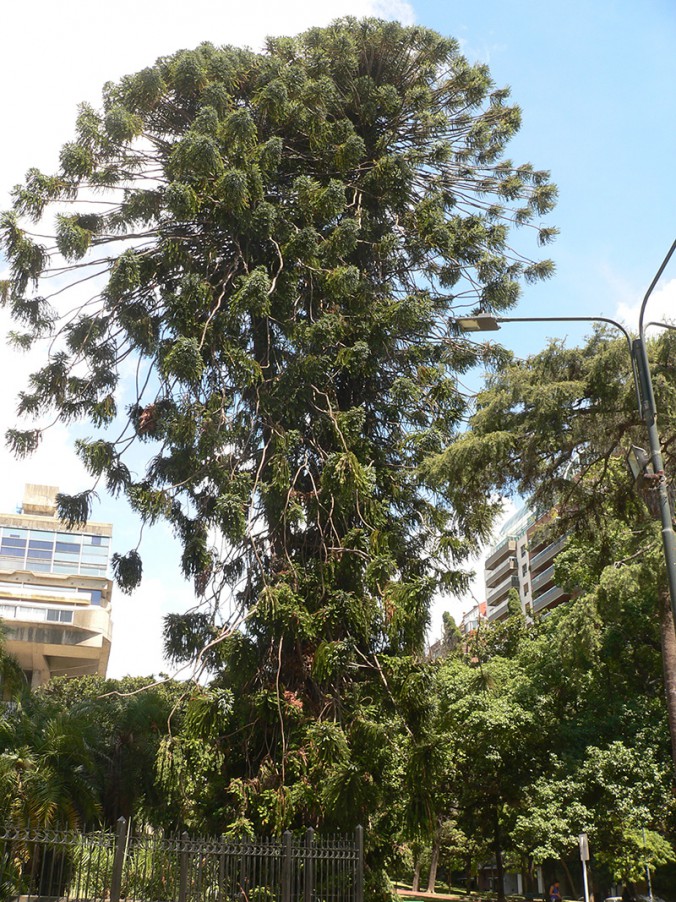Driving around the streets of Buenos Aires the capital of Argentina, as you do, it is easy to see why it is call the Paris of the South. Wide boulevards, extensive parklike gardens, and heaps of statues. Striking and so South American are the frequent mature Araucaria trees.
A distinguishing feature of many South American landscapes is the Araucaria araucana trees, commonly called monkey puzzles, or Chilean pines. An evergreen tree native to central and southern Chile and western Argentina, they grow to five metres in diameter and up to 40 metres in height.
Araucaria araucana is the hardiest species in the conifer genus Araucaria and because of their longevity are often described as living fossils. Their natural habitat is the lower slopes of the Chilean and Argentinean south-central Andes Mountains, typically above 1000 metres. Juvenile trees exhibit a broadly pyramidal or conical habit which develops into the distinctive umbrella form as trees mature.
The genus Araucaria has a long and noble ancestry, and still consists of twenty five species, all in the southern hemisphere. Palaobotanists have traced the ancestors of the genus back to prehistoric times. Common to all twenty five of the species is the regimented geometry associated with the time of the dinosaurs. The trees radiate whorls of branches stiffer and spiker than those of any other conifers.
The great majority of the genus Araucaria are confined to the tropical forests of New Caledonia. But four species (A.excelsa, A. bidwillii, A. columnaris and A. cunninghamii) originate from cooler lands further south, including the rainforests of Queensland and distinctively to Norfolk Island.
The species was ‘discovered’ by Archibald Menzies and brought to Europe at the end of the eighteenth century. Menzies was the surgeon-naturalist onboard Discovery, named after Cook’s ship, and under the command of Captain Vancouver. In 1791 the British Admiralty sent Vancouver to explore the Pacific coast of North and South America.

Juvenile trees exhibit a broadly pyramidal or conical habit.
The ship visited Valparaiso Harbour in Chile and there the crew was hosted at a banquet by the Spanish authorities. One of the delicacies on the table was a plate of nuts which they heard were the staple diet of the local Araucano Indians. Menzies slipped some of these mysterious nuts into his pocket. After the ship sailed he planted them as an experiment. When the Discovery docked in England the following year, Menzies had five seedling trees, christened after the Araucano Indians growing in pots in his cabin.
It was these five that became the first monkey puzzle trees introduced into Europe. One of them is planted in Kew Gardens and helped launch the tree’s ‘career’. The name ‘monkey puzzle’ was coined in the 1840s.
